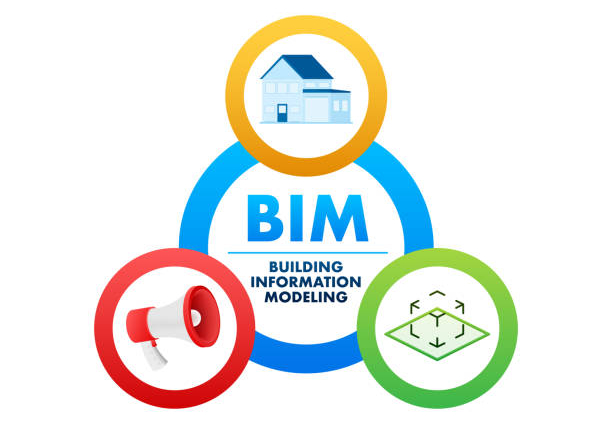How BIM Coordination is Transforming UK Construction Projects
The UK construction industry is under increasing pressure to deliver projects faster, safer, and with greater accountability. From government-led infrastructure programs to private-sector high-rises, clients demand predictability without sacrificing quality.
One of the most effective ways the industry is meeting this demand is through Building Information Modeling (BIM) coordination.
BIM has shifted from a compliance requirement under the UK government’s mandate to a driver of efficiency and collaboration across the project lifecycle. For contractors and engineers, it is not simply a digital tool but a way of rethinking how projects are planned, designed, and delivered.
The Role of BIM Coordination in UK Projects
Eliminating Clashes Before They Happen
Clash detection is one of BIM’s most immediate benefits. In dense urban projects or complex facilities like hospitals, conflicts between ducts, pipes, conduits, and structures are almost inevitable.
BIM coordination enables teams to detect and resolve these issues digitally, reducing costly rework once construction is underway.
Supporting Regulatory Compliance
UK projects face strict compliance standards, from fire safety to energy performance and accessibility. BIM embeds these requirements into the model, helping contractors and designers meet obligations without relying solely on manual checks. This not only reduces delays but also improves confidence during inspections.
Enhancing Collaboration
BIM coordination promotes a single source of truth, allowing architects, engineers, and contractors to work from the same digital model. This reduces communication breakdowns and ensures that updates are instantly visible to all stakeholders. In an industry where fragmented teams often create delays, this collaboration is invaluable.
Why MEP BIM Matters Most
Mechanical, electrical, and plumbing (MEP) systems represent some of the most complex and interdependent elements of construction projects. Errors in these systems often lead to the most expensive forms of rework.
Through specialized MEP BIM Services, UK contractors can ensure that HVAC systems, electrical conduits, and plumbing layouts are fully coordinated with structural and architectural designs. Accurate MEP models not only support prefabrication but also ensure that installations are safe, compliant, and efficient.
By investing in detailed MEP coordination early, project teams can save significant time and reduce disputes later in the project lifecycle.
Real-World Impact on UK Construction
The benefits of BIM coordination are not theoretical. On infrastructure projects like HS2 or large-scale hospital builds, BIM has already shown its ability to streamline delivery. Multi-trade coordination through BIM reduces RFIs, accelerates approvals, and allows for better planning of sequencing and logistics.
In commercial and residential projects, BIM has helped address the challenges of limited space and strict safety standards. By creating accurate models of risers, service corridors, and penetrations, contractors can prevent the kinds of costly field adjustments that once delayed schedules.
Key Advantages of BIM Coordination
- Fewer Delays: Clashes are resolved before construction begins.
- Lower Costs: Reduced rework leads to measurable savings.
- Improved Safety: Models incorporate compliance standards from the outset.
- Prefab-Ready Deliverables: Assemblies and sections can be fabricated off-site.
- Better Quality Control: Centralized models ensure consistency across trades.
These advantages are particularly important in the UK, where tight timelines and high land costs make efficiency a business-critical priority.
Overcoming Challenges in Adoption
Despite clear benefits, BIM coordination in the UK still faces barriers. Smaller contractors may see it as expensive or complex, while others may lack in-house expertise. The key is recognizing that the investment pays for itself through reduced errors and better collaboration.
Working with an experienced BIM Company like Eracore helps project teams overcome these hurdles. By combining technical expertise with practical field knowledge, such firms ensure that BIM deliverables are not only accurate but also buildable.
Trends Shaping the Future of BIM in the UK
Several emerging trends are shaping how BIM will evolve in the UK construction sector:
- Digital Twins: Linking BIM models with live building data for operations and maintenance.
- AI-Driven Coordination: Predictive clash detection and risk management tools.
- Modular Construction: BIM-designed assemblies built off-site for faster installation.
- Sustainability Modeling: Using BIM to optimize energy use and carbon reduction.
- Cloud Collaboration: Shared platforms enabling global project teams to work in real time.
These trends highlight how BIM is moving beyond design into the broader ecosystem of construction and operations.
Shaping the Future of UK Construction
BIM coordination is no longer optional in UK construction, it is essential for delivering projects that meet today’s standards for speed, safety, and compliance. By embedding collaboration, clash detection, and regulatory checks into the design process, BIM transforms how contractors and engineers manage complexity.
From MEP BIM Services to advanced digital workflows, the companies that embrace coordination are already gaining a competitive edge.
With the support of proven partners like Eracore, UK project teams can move from reactive problem-solving to proactive planning, ensuring projects are completed on time, on budget, and to the highest standard.


Leave a Reply
Want to join the discussion?Feel free to contribute!